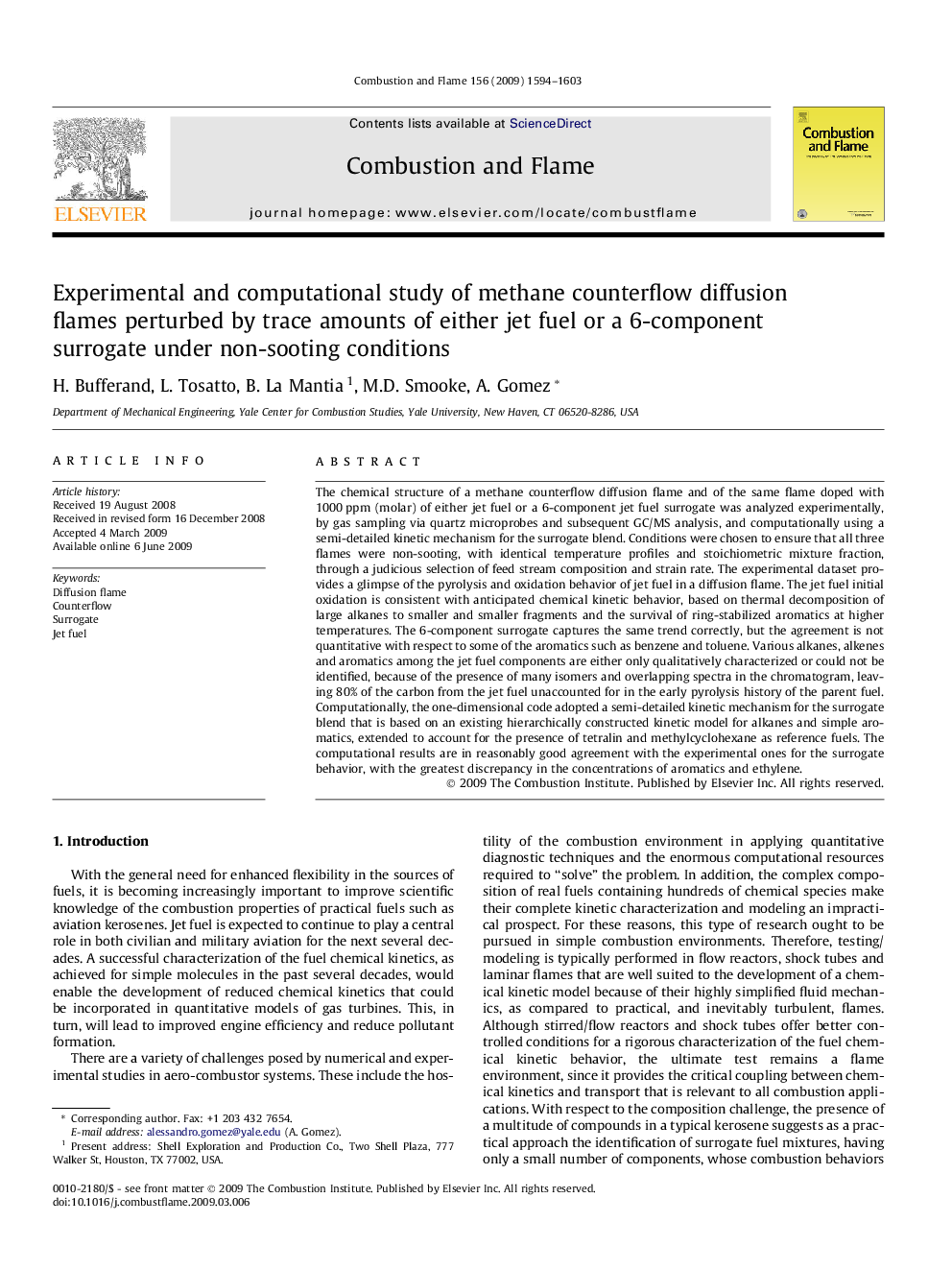| کد مقاله | کد نشریه | سال انتشار | مقاله انگلیسی | نسخه تمام متن |
|---|---|---|---|---|
| 167547 | 457868 | 2009 | 10 صفحه PDF | دانلود رایگان |

The chemical structure of a methane counterflow diffusion flame and of the same flame doped with 1000 ppm (molar) of either jet fuel or a 6-component jet fuel surrogate was analyzed experimentally, by gas sampling via quartz microprobes and subsequent GC/MS analysis, and computationally using a semi-detailed kinetic mechanism for the surrogate blend. Conditions were chosen to ensure that all three flames were non-sooting, with identical temperature profiles and stoichiometric mixture fraction, through a judicious selection of feed stream composition and strain rate. The experimental dataset provides a glimpse of the pyrolysis and oxidation behavior of jet fuel in a diffusion flame. The jet fuel initial oxidation is consistent with anticipated chemical kinetic behavior, based on thermal decomposition of large alkanes to smaller and smaller fragments and the survival of ring-stabilized aromatics at higher temperatures. The 6-component surrogate captures the same trend correctly, but the agreement is not quantitative with respect to some of the aromatics such as benzene and toluene. Various alkanes, alkenes and aromatics among the jet fuel components are either only qualitatively characterized or could not be identified, because of the presence of many isomers and overlapping spectra in the chromatogram, leaving 80% of the carbon from the jet fuel unaccounted for in the early pyrolysis history of the parent fuel. Computationally, the one-dimensional code adopted a semi-detailed kinetic mechanism for the surrogate blend that is based on an existing hierarchically constructed kinetic model for alkanes and simple aromatics, extended to account for the presence of tetralin and methylcyclohexane as reference fuels. The computational results are in reasonably good agreement with the experimental ones for the surrogate behavior, with the greatest discrepancy in the concentrations of aromatics and ethylene.
Journal: Combustion and Flame - Volume 156, Issue 8, August 2009, Pages 1594–1603